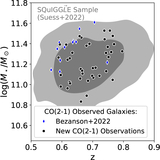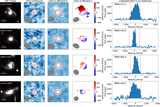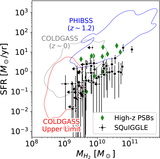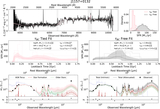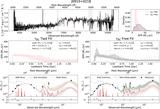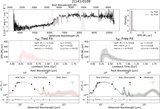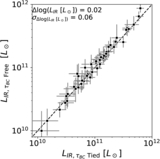Image Details
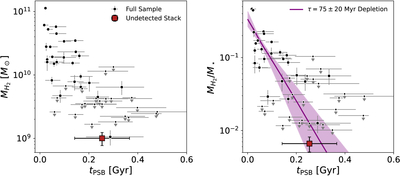
Caption: Figure 11.
﹩{M}_{{{\rm{H}}}_{2}}﹩ mass (assuming r21 and αCO = 4.0, left) and molecular gas fraction (right) vs. post-starburst time (defined as the time at which the galaxy formed 99% of the total mass formed in the Gyr before observation, as measured from the τBC Free fits). We show SQuIGG﹩\overrightarrow{L}﹩E points in black, with CO-detected galaxies as large symbols and CO upper limits as smaller symbols. A stack of all nondetections is shown as a red square at the median tPSB. Similar to the trend with the time since quenching reported in R. Bezanson et al. (2022), we find that only the youngest SQuIGG﹩\overrightarrow{L}﹩E galaxies are CO-luminous. In purple, we show a best-fitting exponential to the gas fraction as a function of age with a decay timescale of 70 ± 20 Myr, implying that galaxies must clear out their remaining molecular gas reservoirs in ≲150 Myr to match the observed trend.
Copyright and Terms & Conditions
© 2025. The Author(s). Published by the American Astronomical Society.


